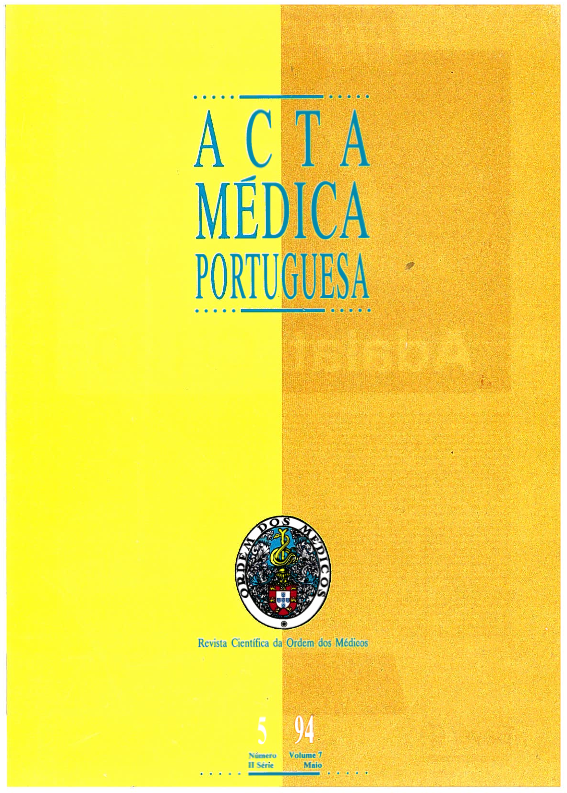A homocisteinemia como factor de risco de doença cerebrovascular precoce.
DOI:
https://doi.org/10.20344/amp.2899Resumo
To determine whether hyperhomocysteinemia represents a risk factor of early thrombotic cerebrovascular disease.In a group of patients under 55 years of age (n = 33, 19 males) which had suffered a stroke from 3 months to 1 year before the study, defined by clinical criteria and presence of cerebral infarction confirmed by tomography, without history or predisposition to embolic disease. The patients were matched with a group of normal controls of checkup program, in terms of age, and sex. Patients and controls with a history of alcoholism, clinical or laboratory signs of renal or hepatic insufficiency or with a history of recent ingestion of Group B vitamins were excluded since these conditions would influence homocysteinemia levels. We measured the plasmatic basal homocysteinemia of patients and controls (HC) and 6 hours later a methionine overload of 0.1 g/Kg body weight (LOAD HC).Patients; Controls; Signific.; Age 46.0 +/- 7.7; 45.9 +/- 7.8; NS; Basal HC. 10.1 +/- 3.4; 8.5 +/- 1.7; p < 0.05; Load HC 28.0 +/- 7.6; 22.7 +/- 5.5; p < 0.01.In this study hyperhomocysteinemia appears as a risk factor for thrombotic cerebrovascular disease before the age of 55;-The measurement of homocysteinemia after the methionine loading test was more discriminative than the basal measurement;-A larger number of patients and controls will be necessary to establish the relative importance of homocysteinemia among other vascular risk factors in cerebrovascular disease.Downloads
Downloads
Como Citar
Edição
Secção
Licença
Todos os artigos publicados na AMP são de acesso aberto e cumprem os requisitos das agências de financiamento ou instituições académicas. Relativamente à utilização por terceiros a AMP rege-se pelos termos da licença Creative Commons ‘Atribuição – Uso Não-Comercial – (CC-BY-NC)’.
É da responsabilidade do autor obter permissão para reproduzir figuras, tabelas, etc., de outras publicações. Após a aceitação de um artigo, os autores serão convidados a preencher uma “Declaração de Responsabilidade Autoral e Partilha de Direitos de Autor “(http://www.actamedicaportuguesa.com/info/AMP-NormasPublicacao.pdf) e a “Declaração de Potenciais Conflitos de Interesse” (http://www.icmje.org/conflicts-of-interest) do ICMJE. Será enviado um e-mail ao autor correspondente, confirmando a receção do manuscrito.
Após a publicação, os autores ficam autorizados a disponibilizar os seus artigos em repositórios das suas instituições de origem, desde que mencionem sempre onde foram publicados e de acordo com a licença Creative Commons









